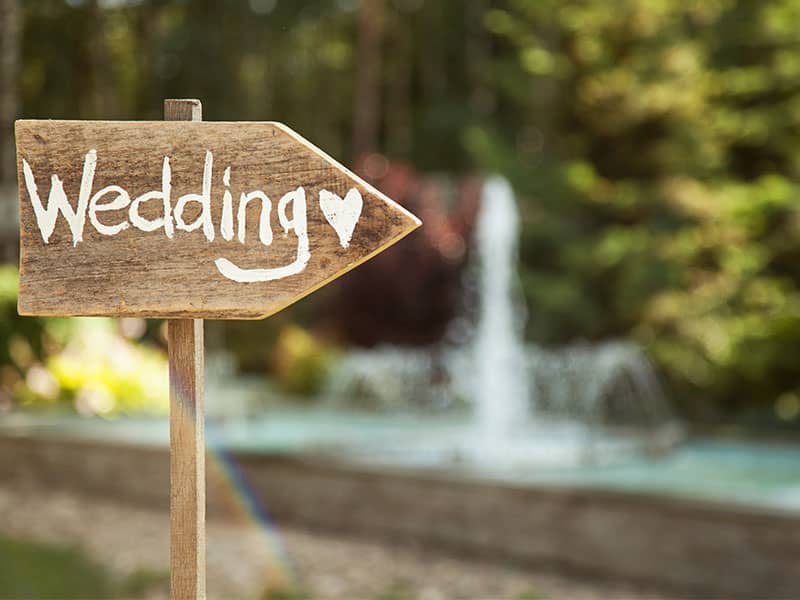Handfasting was practiced for centuries throughout northern Europe and Scandinavia and was legal (in Scotland at least) until the mid-19th century. The phrases "asking for her hand in marriage" and "the bonds of matrimony" refer to the handfasting, in which the hands of the bride and groom are literally bound together.
The practice of handfasting has come back in style, reflecting not only neo-paganism and the popularity of all things Celtic but also the desire of many couples to shape wedding ceremonies that reflect their personalities and values. Because handfasting originated as a self-created and self-officiated form, the bride and groom had no choice but to take charge of every aspect of the ceremony. That theme carries over to the way handfasting is practiced today.
Handfasting is a romantic yet extremely practical approach to the wedding ceremony. Those who choose handfasting are usually people who desire a participatory ritual for themselves and their guests, rather than one in which the officiating clergy does most of the talking and the guests sit, audience-style, witnessing the event.
Of the handfastings I've been involved in, no two were alike, though they all had one thing in common: They were lots of fun. If you decide this is the form you'd like to use, all that's required is imagination, creativity, and a little research. As you plan, try not to think of how the ritual should be, but how you want it to be.
Handfastings almost always take place in outdoor locations, the preferred ritual setting of most pagans I know. However, if this isn't appealing to you, by all means, have the ritual inside. I recently attended a handfasting that was held in a gay/lesbian bookstore. Another was held in a soup kitchen where the bride and groom worked.
The guests usually stand in a circle and are welcomed by one of the officiating group (usually handfastings are presided over by several people). A circle is cast, that is, an energetic boundary is drawn around the physical space, the elements of life--air, fire, water, and earth--are called into the circle, and deities associated with true love and commitment are invoked, such as Aphrodite, Gaia, and Apollo.
The bride and groom are brought into the circle, attended by what would usually be called maids of honor and best men. Sometimes they are led around the inside of the circle so the guests can greet them. At Starhawk's handfasting, her coven sisters swept her around the circle in one direction while her husband was escorted around in the opposite direction. As they passed each other, they acknowledged each other lovingly. The guests called out hellos and blessings. It was a warm and friendly way to begin the ritual.
The couple is brought to the center of the circle to exchange vows. Traditionally, couples weren't compelled to remain together until "death do we part." Sometimes handfastings were conducted as trial marriages--the couple promised to be bound for a year and a day, after which they could renew the marriage or dissolve the bonds if the marriage wasn't working. Many contemporary couples vow to remain together "as long as love lasts." However, there is no standard form for vows: After making their vows of commitment, one couple solemnly promised to clean their cat box once a week.
Many couples exchange rings or other tokens. Sometimes the rings are passed around the circle as the vows are being said, allowing each of the guests to charge the rings with blessings and good wishes.
This is usually followed by the wedding kiss. After that, something energetic happens. Sometimes it's a round of applause and cheers (as often happens at weddings). Pagans have a hard time sitting still at moments like that, so often the kiss is followed by a dance of some kind. At a friend's handfasting, the kiss was followed by Sufi twirling (by the bride and groom), after which everyone was swept into a spiral dance. Drummers joined the bride and groom in the center of the space while the rest of us danced in celebration.
Many couples "jump the besom." A fancy broom, a symbol of fertility, decorated with flowers, herbs, and tokens is held parallel to the ground. The bride and groom leap over the broom to make their marriage fruitful.
To close the ritual, the deities are devoked, the elements are released, and the circle is opened. The ritual is followed by a reception with all the usual wedding revelry.
If you want to make sure that the ceremony is legal, check local regulations to make sure you're in compliance. This usually means having someone qualified to perform marriages present who can sign the marriage certificate and license.
Handfasting is not for everyone. If the idea of creating a ritual more or less from scratch seems daunting, that might be a sign that you should try a different form, or at least appoint a planning committee. Some people also resist the idea of being literally bound together. The tying together of hands is an extremely potent symbol.
Weddings are powerful rituals no matter what form is used. Choosing the right form can make the difference between a meaningful event and one that's not quite what you had in mind. Whatever you choose, may your ceremony be the beginning of days filled with much love, good health, and long life.

